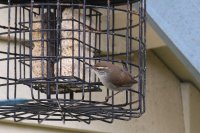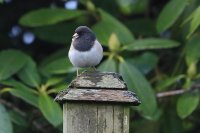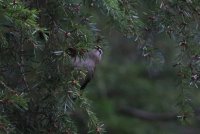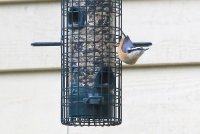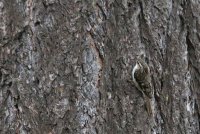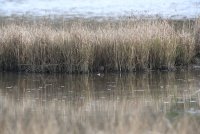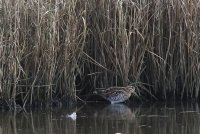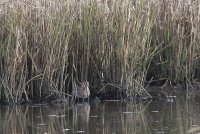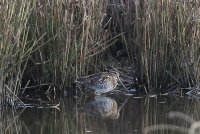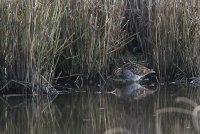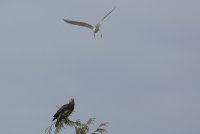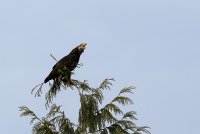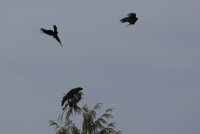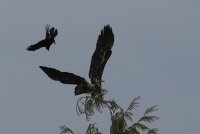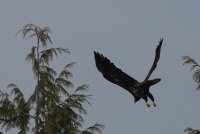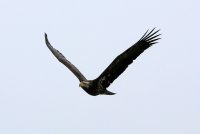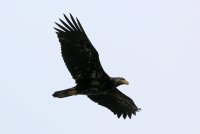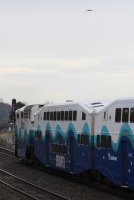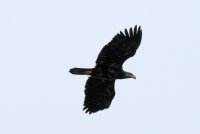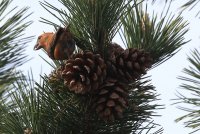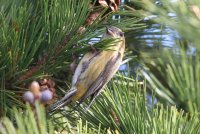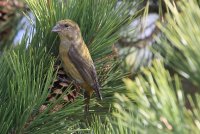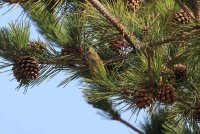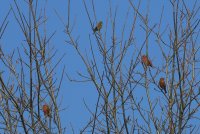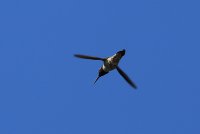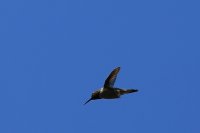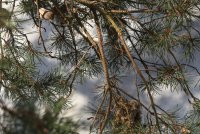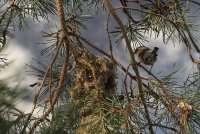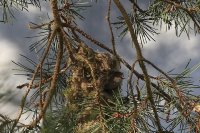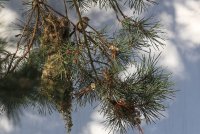You are using an out of date browser. It may not display this or other websites correctly.
You should upgrade or use an alternative browser.
You should upgrade or use an alternative browser.
Wildlife of Edmonds, WA.
- Thread starter Bill Anderson
- Start date
PNWPhotos.com a friendly and growing community of photographers with an interest in the Pacific Northwest region.
We feature a Photography Discussion Forum and Pacific Northwest Photo Gallery. It's a fun and friendly place to talk with other photographers, ask questions, share you knowledge, view and post photos and more!
It probably was your backyard hawk, as it left when it saw you were not with me.
Affiliate Disclosure: We may receive a commision from some of the links and ads shown on this website (Learn More Here)
A few from Friday (3/22).
Varied thrush at the fish hatchery.
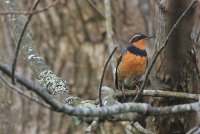
Anna's hummingbird along the Pt. Edwards walkway.
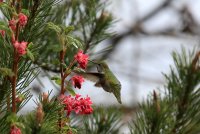
Yellow-rumped warbler at the retention pond at the end of the Pt. Edwards walkway.
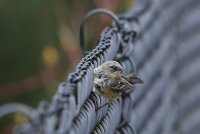
Downey woodpecker along the marsh walkway.
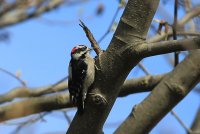
McInroe, the male Anna's hummer who guards the #3 viewing platform at the marsh. I was not quick enough to get photos of him buzzing a nearby crow with one of his high speed "J" dives.
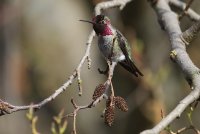
Varied thrush at the fish hatchery.

Anna's hummingbird along the Pt. Edwards walkway.

Yellow-rumped warbler at the retention pond at the end of the Pt. Edwards walkway.

Downey woodpecker along the marsh walkway.

McInroe, the male Anna's hummer who guards the #3 viewing platform at the marsh. I was not quick enough to get photos of him buzzing a nearby crow with one of his high speed "J" dives.

Saturday (3/23) was very sunny and lots of people were out bird watching in the Edmonds Birdmuda Triangle. I met a couple at the marsh and later gave them a guided tour of the Pt. Edwards walkway.
As we reached the end of the walkway past the retention pond, a red-tailed hawk landed nearby. They were quite pleased.
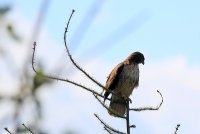
After I returned to the fish hatchery, I kept hearing something under a plant in front of me in the nature garden. As I gingerly approached the plant, a marsh wren darted out from beneath it and scooted into the nearby man-made brush pile.
Edit (12/17): I revisited this photo after seeing a photo of a Pacific wren and posted a query on Tweeter's. The majority of respondents identified it as a Pacific wren and said this behavior is typical of one.
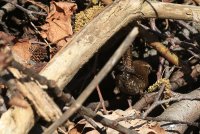
I went back to the marsh and found a black-capped chickadee hunting for insect larvae burrowed inside the cattail heads.
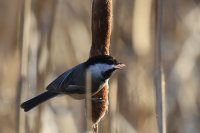
My last stop for the afternoon was the fishing pier, where a pelagic cormorant was diving for fish.
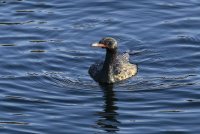
Coming up empty, it left before I did.
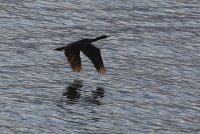
As we reached the end of the walkway past the retention pond, a red-tailed hawk landed nearby. They were quite pleased.

After I returned to the fish hatchery, I kept hearing something under a plant in front of me in the nature garden. As I gingerly approached the plant, a marsh wren darted out from beneath it and scooted into the nearby man-made brush pile.
Edit (12/17): I revisited this photo after seeing a photo of a Pacific wren and posted a query on Tweeter's. The majority of respondents identified it as a Pacific wren and said this behavior is typical of one.

I went back to the marsh and found a black-capped chickadee hunting for insect larvae burrowed inside the cattail heads.

My last stop for the afternoon was the fishing pier, where a pelagic cormorant was diving for fish.

Coming up empty, it left before I did.

Last edited:
By human standards, the Circle of Life can be cruel. I fear the baby hummingbirds met an untimely end sometime Friday (3/22).
At 9:20am I photographed what appeared to be one of the baby hummers sitting in the nest in its standard "bill up" position.
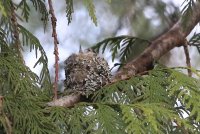
I returned to the nest later in the afternoon and photographed the mother hummer making three trips to what appeared to be an empty nest. In this sequence, taken at 2:05 pm, you can see the mother hummer poking her head deep inside the nest. Normally she would not have to do this, as the babies would raise their heads up to meet her bill and be fed.
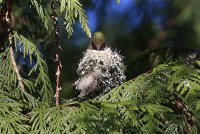
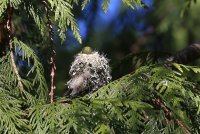
She took off......
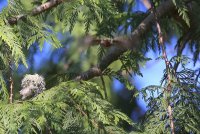
Leaving behind what looked like an empty nest.
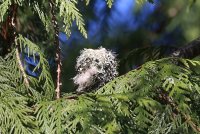
Throughout the afternoon she remained near the nest and chased off birds which got too close, including a back-capped chickadee and a golden-crowned sparrow. I think the babies were too young to have fledged and may have been eaten by a predator.... most likely another bird.
Fortunately, Anna's hummingbirds are not an endangered species in my area. As spring has just begun and there are plenty of males in the vicinity, this female may once again mate, build another nest, and raise a second pair of offspring this year. Anna's have been known to "double clutch", i.e., the female may produce and raise two broods during the normal nesting season. Our local Anna's do not migrate, so unlike local migratory species such as the osprey, there is no pressure for the juvies to develop and be ready for a long journey south before next autumn.
At 9:20am I photographed what appeared to be one of the baby hummers sitting in the nest in its standard "bill up" position.

I returned to the nest later in the afternoon and photographed the mother hummer making three trips to what appeared to be an empty nest. In this sequence, taken at 2:05 pm, you can see the mother hummer poking her head deep inside the nest. Normally she would not have to do this, as the babies would raise their heads up to meet her bill and be fed.


She took off......

Leaving behind what looked like an empty nest.

Throughout the afternoon she remained near the nest and chased off birds which got too close, including a back-capped chickadee and a golden-crowned sparrow. I think the babies were too young to have fledged and may have been eaten by a predator.... most likely another bird.
Fortunately, Anna's hummingbirds are not an endangered species in my area. As spring has just begun and there are plenty of males in the vicinity, this female may once again mate, build another nest, and raise a second pair of offspring this year. Anna's have been known to "double clutch", i.e., the female may produce and raise two broods during the normal nesting season. Our local Anna's do not migrate, so unlike local migratory species such as the osprey, there is no pressure for the juvies to develop and be ready for a long journey south before next autumn.
Last edited:
Looks like you did a great job as a tour guide!! I'm thinking that must be the same red-tailed hawk that occasionally visits us. Sure look like the same bird.
It probably was your backyard hawk, as it left when it saw you were not with me.
Three snipes were seen Monday afternoon (3/25) from the west (#1) viewing platform. One made a brief cameo appearance (no photos),
one bathed itself then disappeared back into the cattails,
7D + 2.8/400L + 2x teleconverter
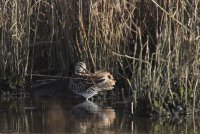
and one remained at the plant/mud/water interface to hunt for food.
5D MkIII + 2.8/400L + 2x teleconverter
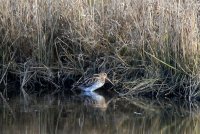
The water level in the marsh was the highest I have seen for over a month. The snipes like it when the water level is just below the bottom of the plants so they can walk on the mud and use their excellent camouflage to blend into the plants directly behind them while they are dipping into the water for food.
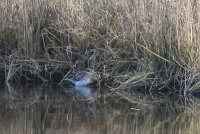
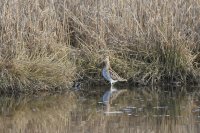
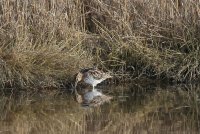
one bathed itself then disappeared back into the cattails,
7D + 2.8/400L + 2x teleconverter

and one remained at the plant/mud/water interface to hunt for food.
5D MkIII + 2.8/400L + 2x teleconverter

The water level in the marsh was the highest I have seen for over a month. The snipes like it when the water level is just below the bottom of the plants so they can walk on the mud and use their excellent camouflage to blend into the plants directly behind them while they are dipping into the water for food.



Several of us took advantage of Monday's (3/25) sunshine and were out with binos or cameras looking for birds. Here are a few from the fish hatchery.
A pair of Townsend's warblers have been hanging around the hatchery the past week. They have proved to be harder to shoot than the ruby-crowned kinglet.
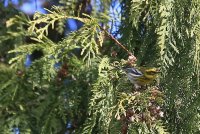
And speaking of the ruby-crowned kinglet, this one had just captured a bug.
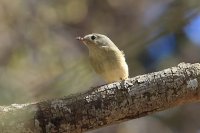
A hummer was going after a bug as well, which you can see on the left side of the photo.
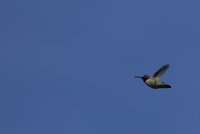
This hummer was taking a different approach to hunting bugs by raiding a spider web. I have photographed a hummer using this technique once before.
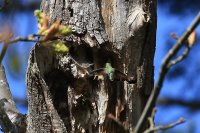
A brown creeper sunning itself on the wildlife tree. To find the creeper, go straight up from the sign to nearly the top of the photo.
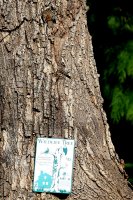
A pair of Townsend's warblers have been hanging around the hatchery the past week. They have proved to be harder to shoot than the ruby-crowned kinglet.

And speaking of the ruby-crowned kinglet, this one had just captured a bug.

A hummer was going after a bug as well, which you can see on the left side of the photo.

This hummer was taking a different approach to hunting bugs by raiding a spider web. I have photographed a hummer using this technique once before.

A brown creeper sunning itself on the wildlife tree. To find the creeper, go straight up from the sign to nearly the top of the photo.

Last edited:
Wednesday (3/27) Terry and I tried taking some long distance shots of activity at the Edmonds marsh heron rookery with our big telephoto lenses. My photos were quite poor and I deleted all of them. Here are some from the day that I did keep.
5D MkIII + 100-400L, handheld
A brown creeper brought material to build a nest inside a stump on the fish hatchery grounds.
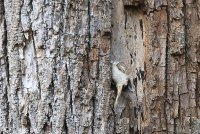
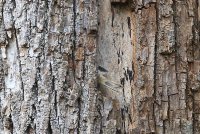
A female house finch up at the Pt. Edwards condos was gathering nest material as well.
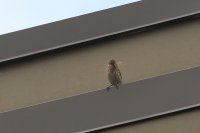
An Anna's hummingbird was feeding on some blooms beside the walkway below the condos.
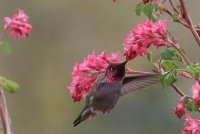
7D + 2.8/400L + 2x teleconverter, tripod mounted
A pelagic cormorant was feeding on some sort of shellfish by the fishing pier.
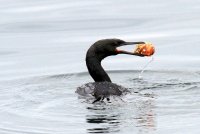
5D MkIII + 100-400L, handheld
A brown creeper brought material to build a nest inside a stump on the fish hatchery grounds.


A female house finch up at the Pt. Edwards condos was gathering nest material as well.

An Anna's hummingbird was feeding on some blooms beside the walkway below the condos.

7D + 2.8/400L + 2x teleconverter, tripod mounted
A pelagic cormorant was feeding on some sort of shellfish by the fishing pier.

Next stop was the marina. I attached a circular polarizing filter to my 100-400L lens and photographed a female common goldeneye diving inside the marina.
Like the grebes, the goldeneye propels itself under water by a frog kick.
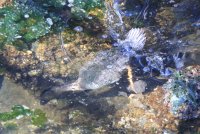
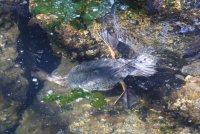
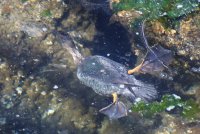
Returning to the surface.
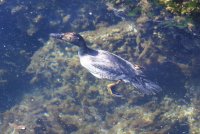
Up for air.
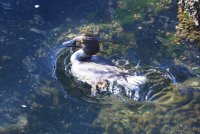
I should have used spot metering, as the lighter colors are slightly washed out.
Like the grebes, the goldeneye propels itself under water by a frog kick.



Returning to the surface.

Up for air.

I should have used spot metering, as the lighter colors are slightly washed out.
Last edited:
The pale eyes of the female bushtit, which is one size up from a hummer, are both spooky and photogenic.
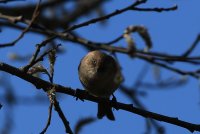
Bushtits gather cattail fuzz from the marsh to build hanging nests, which resemble worn out sweat socks. I have observed that many birds do not fly directly to their nests or burrows but will first perch on a branch. I assume this is a behavioral adaptation to avoid leading predators directly to the nest.
The female waits before delivering cattail fuzz to the nest, which is still under construction.
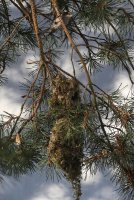
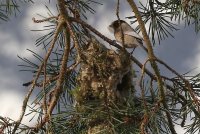
Into the nest with a mouth full of fuzz.
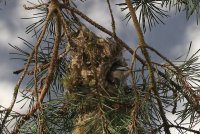
And out for another trip to the marsh. You could see the nest move while she was inside arranging the fuzz.
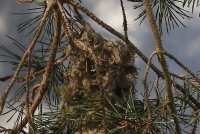

Bushtits gather cattail fuzz from the marsh to build hanging nests, which resemble worn out sweat socks. I have observed that many birds do not fly directly to their nests or burrows but will first perch on a branch. I assume this is a behavioral adaptation to avoid leading predators directly to the nest.
The female waits before delivering cattail fuzz to the nest, which is still under construction.


Into the nest with a mouth full of fuzz.

And out for another trip to the marsh. You could see the nest move while she was inside arranging the fuzz.

Last edited:
PNWPhotos.com is a participant in the Amazon Services LLC Associates Program, an affiliate advertising program designed to provide a means for sites to earn advertising fees by advertising and linking to amazon.com

